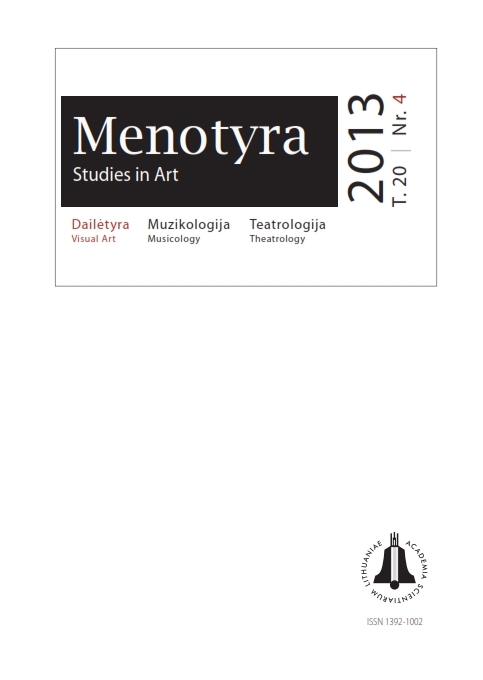Brutali erotika ir reikšminga forma: Vinco Kisarausko kūrybos epizodas
Brutal eroticism and significant form: an episode in the creative work of Vincas Kisarauskas
Author(s): Erika GrigoravičienėSubject(s): Fine Arts / Performing Arts, Visual Arts
Published by: Lietuvos mokslų akademijos leidykla
Keywords: Vincas Kisarauskas; significant form; structuralism; Oedipus; Antigone; eroticism; gender opposition; desiring machine
Summary/Abstract: Combining the semiotic and intertextual approaches, this article analyses the middle period works - brutal erotic images - of the most famous Soviet Lithuanian (semi)non-conformist painter Vincas Kisarauskas. These are the series painted in the 1960s and the 1970s, such as “The Brutal One”, “Rape”, “Breakfast on the Grass” as well as small-format composition sketches. Although some of these works were shown in exhibitions after 1990, they have hardly ever been interpreted by art critics.For Kisarauskas, similarly as for structuralists, the idea of an independent semantic value of signs or forms was connected to the reception of the Ancient Greek myths - the figures of Oedipus and Antigone. A frequent motif in the analysed paintings is a closed or hollow box that connects to a human body or a body part in some way. Cyborgs or male and female bodies trapped in ‘black boxes’ are characteristic of erotic fetishism and also have associations with such notions of Deleuze and Guattari as the ‘partial object’, ‘desiring machine’ or ‘body without organs’. In Kisarauskas’ work, surreal images of a female body or scenes of desire including several figures appear together with paintings depicting gender inequality and brutal violence against women.After the end of Stalinism, for many artists, nudes and erotica, common in the art of the entire Eastern Europe, really seemed to be a symbol of Western civilization and progress, i.e. freedom and resistance. Kisarauskas went much further: from plastic contrasts, difference between formal elements of painting to the hierarchical gender opposition that is crucial to the culture itself and the difference between humans and machines, from Oedipus’ tragedy to a kind of visual “anti- oedipus” destroying the binary logics of conformism and resistance.
Journal: Menotyra
- Issue Year: 20/2013
- Issue No: 4
- Page Range: 342-358
- Page Count: 17
- Language: Lithuanian

